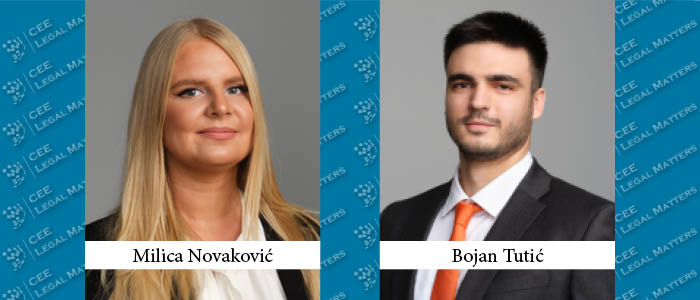Since the release of the Barbie movie, there’s been an unmistakable global buzz. Beyond film, it has driven sales across a spectrum of Barbie merchandise, from costumes and makeup to beverages and even a rentable Barbie dreamhouse. The success of the Barbie movie, dolls, and brand hinges on Mattel’s very prudent approach to protecting their intellectual property rights.
Origins
The story begins in 1956 when Ruth Handler, a co-founder of Mattel Inc, came across a German doll named Bild Lilli during a vacation in Switzerland. Mattel took the Lilli doll and made some slight cosmetic alterations, changing the doll’s hairline and eyebrows. Thus, the Barbie doll was born. However, this redesign led to a lawsuit from Bild Lilli’s proprietors against Mattel, alleging infringement of their intellectual property rights. The dispute was ultimately settled, with Mattel paying $21,600 (around $212,000 in today’s money) to acquire the copyright and patent rights for the Lilli Doll.
Given that Barbie doll sales neared $1.5 billion for Mattel in 2022 alone, this agreement seems like one of history’s most lucrative deals. Had the legal challenge been lost, or had the settlement not included intellectual property rights, Barbie’s legacy could have faced countless legal battles or intensified competition.
Intellectual Property at Play
Mattel’s strategic approach to intellectual property encompassed an array of facets, including patents, designs, trademarks, and copyrights. The trajectory of the Barbie brand’s logo, evolving through five iterations before reverting to its original design in 2009, exemplifies the attention to detail that characterizes its intellectual property management.
The pivotal moment was in 1959 when Mattel secured the Barbie trademark, initially confined to “dolls.” Over time, this ambit expanded to encompass diverse categories such as clothing, jewelry, vehicles, and drawing materials. The famous shade of pink associated with Barbie, unsurprisingly called Barbie pink, is a protected color mark in the USA, while “barbiecore” a term describing the notable Barbie look and Barbie fashion is also registered as a trademark and owned by Mattel. On top of that, Jack Ryan the head of Mattel’s research and development department, was awarded a patent on the doll’s construction that allowed Barbie to stand upright.
Observing intellectual property elements within the Barbie Movie is truly intriguing. To illustrate, the appearances of Barbie’s dream house, yacht, and car, which are prominently featured throughout the film, are safeguarded as industrial designs. The film’s creators had to meticulously consider even the smallest particulars when incorporating these branded items into the storyline. Adding to the fascination, it’s noteworthy that the formula for a pink burger sauce inspired by Barbie could qualify for trade secret safeguarding.
Disputes
wMattel’s commitment to safeguarding its intellectual property inevitably gave rise to various legal disputes.
Probably the most famous case (Mattel, Inc v. MCA Records, Inc) was when Aqua, a Danish-Norwegian pop band, made the song “Barbie Girl”. Mattel sued Aqua and the band’s label, alleging trademark and copyright infringement. The courts eventually dismissed these lawsuits ruling that the song was protected as a parody under the trademark doctrine of nominative use. The courts held that “the trademark owner does not have the right to control public discourse whenever the public imbues his mark with a meaning beyond its source-identifying function,” and balanced the “public interest in free expression” against the “public interest in avoiding consumer confusion,” and accorded the former decisive weight unless the song title’s appropriation of Barbie “has no artistic relevance to the underlying work whatsoever, or, if it has some artistic relevance, unless the title explicitly misleads as to the source or the content of the work.” This case famously ended with the judge “advising the parties to chill.” Ironically, 12 years after the song was released Mattel licensed the song “Barbie Girl” for advertising Barbie dolls.
In the case of Mattel, Inc. v. Walking Mountain Products, the makers of Barbie attempted to stop an artist from distributing his series called “Food Chain Barbie.” This series portrayed Barbie being subjected to various kitchen appliances, with some instances suggesting that she found pleasure in such scenarios. The court found that these artworks were allowed under “fair use” because they were parodying Barbie and the messages associated with her. The court also stated that parodies don’t have to use only the smallest amount of the original work, so reproducing the whole Barbie doll in the artwork was okay.
In the case Mattel, Inc. v. 3894207 Canada Inc., the Supreme Court of Canada ruled that trademarks are only protected for the specific products or services they are used for. In this case, the court found that the trademark “BARBIE” was only famous and distinct for dolls and doll accessories, and there was no evidence that it was used for restaurant services, take-out services, catering, or banquet services. Since the products and services were different and sold in separate places, the court did not see a significant risk of confusion for consumers. As a result, the defendant was allowed to use the “BARBIE” mark for their services without infringing on Mattel’s rights.
Barbie in the Western Balkans
In Serbia, an astonishing array of nearly 80 Barbie products are protected, spanning intriguing domains. From cosmetics that mirror her glamour to scientific tools for exploration, Barbie’s influence extends to unexpected corners. Picture this: Barbie-branded toothpaste! This captivating fusion of creativity and intellectual property defies expectations, making Barbie’s impact truly electrifying.
Bosnia and Herzegovina, Montenegro, and North Macedonia are also in the Barbie World. In the Western Balkans products enjoy protection across various categories. Noteworthy mentions include elegant jewelry, creatively printed stationery, chic leather goods, and even kitchenware with a touch of glamour. These instances showcase the iconic Barbie’s fusion with diverse elements, turning intellectual property into a dynamic masterpiece.
Outro
Since the 1980s, thanks to the intellectual property rights it holds, Mattel has been able to develop an extensive range of media and derivative products based on the original Barbie concept. This autonomy would have been jeopardized, and their commercial success limited if the Lilli Doll litigation had not been resolved in their favor.
In our tech-centric era, ownership of the Barbie brand’s intellectual property is crucial. Mattel’s exclusive rights enable them to harness AI, VR, and AR, all while safeguarding the brand’s identity and guiding its tech-enhanced growth.
Significantly, Mattel licenses the Barbie brand to over 100 companies, covering a variety of products ranging from nail polish, clothing, and cosmetics to unique items like pink Xbox controllers. The Barbie emblem ties them all back to the iconic brand.
Barbie’s evolution from a mere doll to a global phenomenon exemplifies the profound impact of astute intellectual property management in shaping the destiny of a brand and its parent company. Its story of creativity, protection, and strategic foresight reinforces the notion that intellectual property rights aren’t just conceptual – they are the foundation of modern business.
By Milica Novakovic and Bojan Tutic, Associates, Gecic Law




